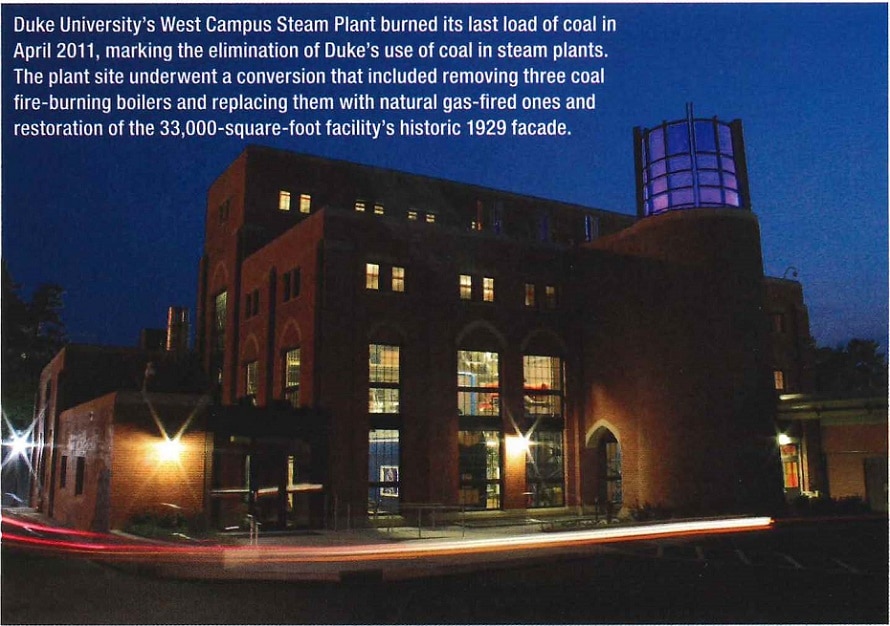Duke University Plants Blow Off Steam With Natural Gas
By Stephanie Anderson Forest, Energy Solutions for Commercial Buildings 2015, pg 2-3
For decades, when Duke University students walked down Coal Pile Drive on the Durham, North Carolina campus, they were greeted by heaps of, well, coal. But, these days, the black piles that used to fuel a coal-burning plant have given way to a natural gas-fired steam plant.
Known as Duke’s West Campus Steam Plant, the facility is part of the university’s steam system, which provides high-pressure steam to the entire Duke University, hospital and medical center community by using natural gas and fuel oil. Steam is distributed through 35 miles of distribution piping and is used for space heating, hot water heating, dehumidification, hospital medical equipment sterilizing, dining services, pool heating, dishwashing and other process uses.
The West Campus Steam Plant burned its last load of coal in April 2011, marking the elimination of Duke’s use of coal in steam plants campus-wide. After a 32-year hiatus, in 2010 Duke’s East Campus Steam Plant re-opened following a renovation. Also discontinuing the use of coal, the renovated plant features 15 natural-gas powered Miura boilers, which require less water and time to produce steam. The switch to natural gas-fired steam plants marked an important step in Duke’s plan to achieve carbon neutrality by 2024.
“Duke’s move to natural gas-fired plants will dramatically reduce their emissions because they are such a big energy user,” says Jerry O’Keefe, manager, large accounts, PSNC Energy.
Casey Collins, acting energy manager, Duke University agrees: “From a sustainability perspective, supply-side measures like switching from coal to natural gas allow us to effect a carbon footprint reduction across 18 million-plus square feet of Duke campus-buildings. This localized change has far-reaching effects.”
Chris Silcott, Duke University, operations engineer, says the West Campus Steam Plant conversion included removing three coal fire-burning boilers and replacing them with natural gas-fired ones, along with new mechanical, electrical and control equipment. Additionally, the project’s scope included the restoration of the 33,000-square-foot facility’s historic 1929 facade.
He says the plant also received significant upgrades in auxiliary equipment, including the addition of a condensing economizer. This device, which allows for significant energy recovery from the boiler flue gases and maximizes plant efficiency, has saved Duke about $480,000 since installation with the project.
Overall, Duke’s switch from coal-fired to natural gas-fired steam plants has provided additional savings. Since 2008, steam system operations and maintenance costs have been reduced by 50 percent; a significant portion of this reduction has come from the transition of both East and West Campus steam plants to natural gas-fueled boilers, says Collins.
In addition, he says, the switch from coal to natural gas has reduced campus steam system emissions by 38 percent.
Winning Record
Duke’s West Campus Steam Plant coal-to-natural gas conversion project recently won Engineering News-Record’s Award of Merit in the category of Renovation/Restoration. The award was based on the renovation/rehabilitation aspects of the project, which was significantly enhanced aesthetically. Key players participating in the project were:
- Lend Lease (construction management firm)
- RMF Engineering (design and commissioning services)
- Flad Architects (architects)
- Lappus & Havener (landscape architecture)

